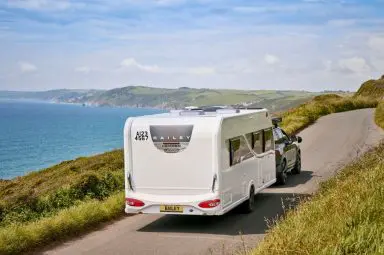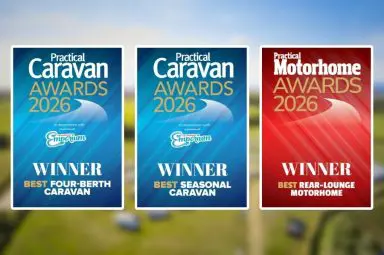Your guide to motorhome berths
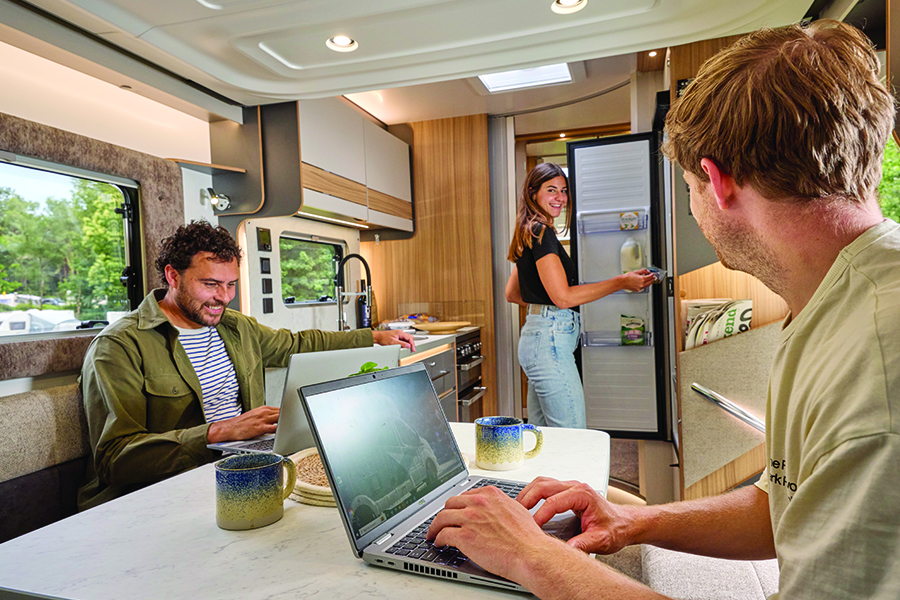
Whether it’s friends staying, a few extra family members, or even accommodating a four-legged friend, getting the berth right is essential for enjoyable motorhome ownership.
This guide walks you through what motorhome berths are, what berths are available, and the kinds of layouts you can expect for each.
What is a motorhome berth?
A motorhome ‘berth’ is a sleeping space within your vehicle. For example, a two berth motorhome will comfortably sleep two people, whereas a six berth will comfortably sleep six.
What constitutes a sleeping space in a motorhome might be one of the following:
- A constantly made-up bed
- A seating area that you can convert into a bed at night
- A constantly made-up bed that drops down from the motorhome ceiling on a mechanism
While the word ‘berth’ is essentially interchangeable with ‘bed’, it also encompasses things like the extra living space, storage space, and length or width the motorhome needs to cater to more people.
Does berth mean seatbelts?
No, berth is distinct from the number of travel seats (seats with seatbelts) in a motorhome. While the berth number often is the same as the number of travel seats, some motorhomes can accommodate more people to sleep than to travel or the other way round.
Many of our Ford motorhomes and campervans have Aguti travel seats. These are folding travel seats designed for motorhomes and campervan conversions.
The Aguti travel seats form part of the front Flexi-lounge in the models that include them. In lounge mode, the seats are folded away underneath the lounge seating, giving you a comfortable sofa-style seat to relax on. Then when travelling, the Aguti seats fold back up ready for use, including seatbelts, dedicated travel seat cushions and ISOFIX.
Depending on the model, the seating also converts into double or single beds at night, meaning that your front lounge becomes more than just a place to sit, but a place to sleep, relax or travel.
Look out for the Flexi-lounge in models across the Adamo, Alora and Endeavour ranges.
Does berth or layout matter more when choosing a motorhome?
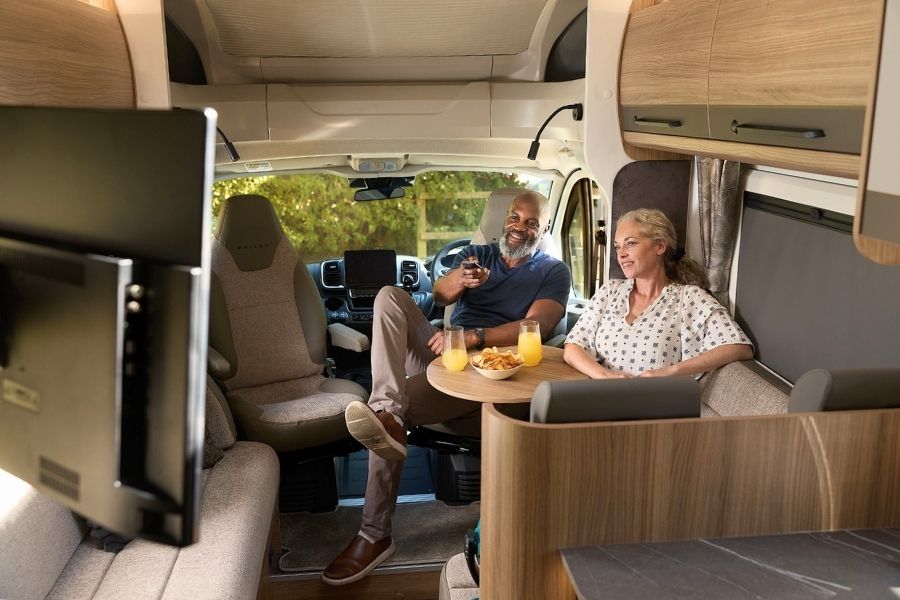
When choosing your next motorhome, it can be tempting to think that the largest number of berths is always the best way to go. And while it’s true that you always need to have in mind the minimum number of sleeping spaces you’ll be likely to need, you’ll usually find the layout is more important.
Layout is so important because it’s essential to your comfort and practical living while on the road, affecting decisions like:
- Do you want to convert your bed at night, or do you always have it made up?
- What about the positioning of the bathroom? Do you need the bathroom to be accessible to multiple people sleeping in different parts of the van at night or would you like an end bathroom that is accessed through a bedroom?
- What size of fridge do you want and do you need a microwave?
These are just some of the decisions implicated by different layout options, but they give you a taste of what you’ll need to consider.
In general, when choosing a layout, you’ll need to keep in mind: Who’s travelling, how long everyone travels for, and how you all like to spend your time in the vehicle.
Want to walk around your new motorhome online?
Use the Bailey Virtual Motorhome Showroom to step inside each model and see what you make of its layout before seeing it in person.
The benefits & layouts of each motorhome berth
2 Berth Motorhomes
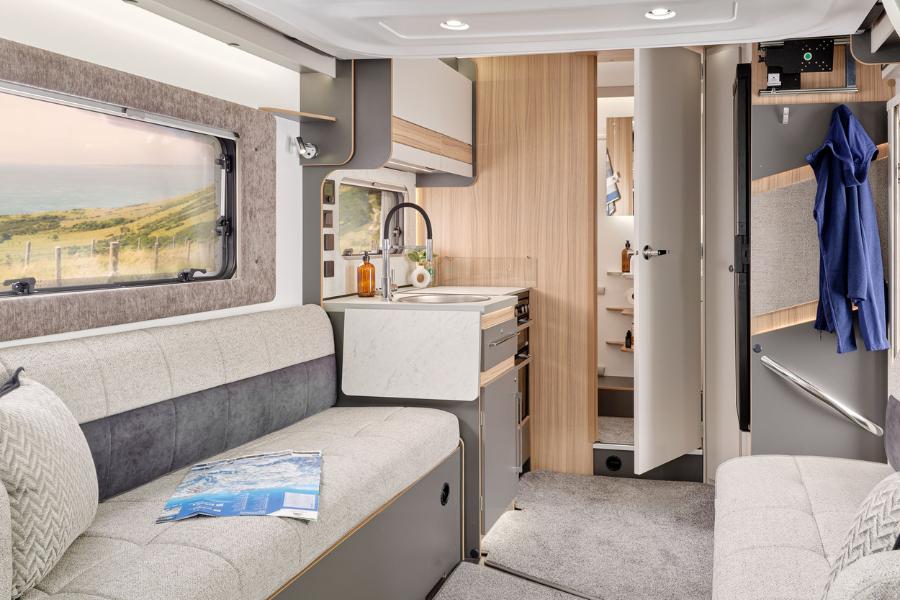
- Ideal for: Couples or friends travelling together
- Main benefits: Their compact size makes them easy to drive, particularly for day visits to city centres
Our 2 berth motorhomes
3 Berth Motorhomes
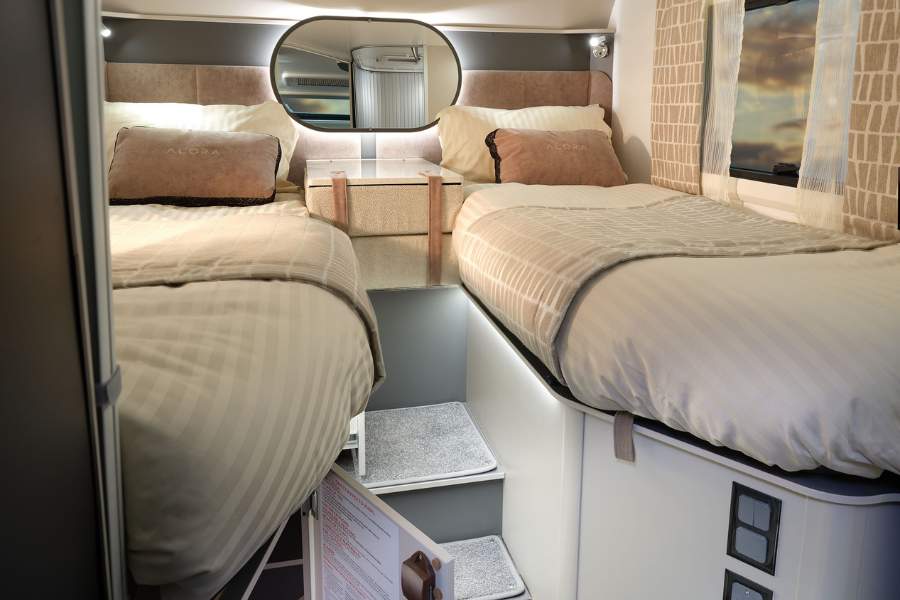
- Ideal for: Small families or couples with the occasional guest
- Main benefits: These motorhomes remain compact enough to go into city centres or more rural, winding country lanes, but give you the flexibility to accommodate an extra person should you ever need to
Our 3 berth motorhomes
4 Berth Motorhomes
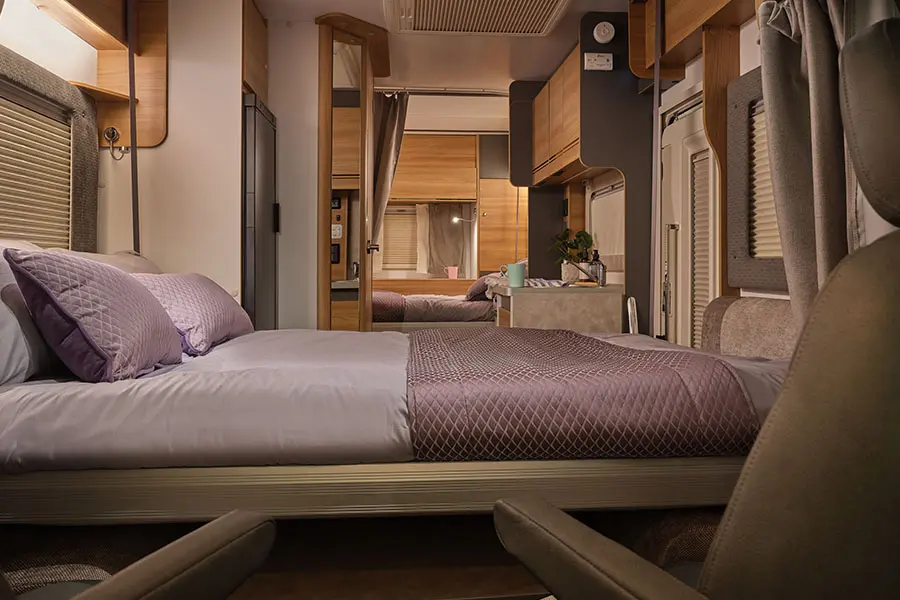
- Ideal for: Families or couples who like to holiday with friends.
- Main benefits: Our most popular berth size, these motorhomes give you the space to travel in comfort as a family without the bulk of a larger vehicle. Their layouts also often mean you can leave at least one bed always made up, while the other converts into a lounge.
Our 4 berth motorhomes
6 Berth Motorhomes
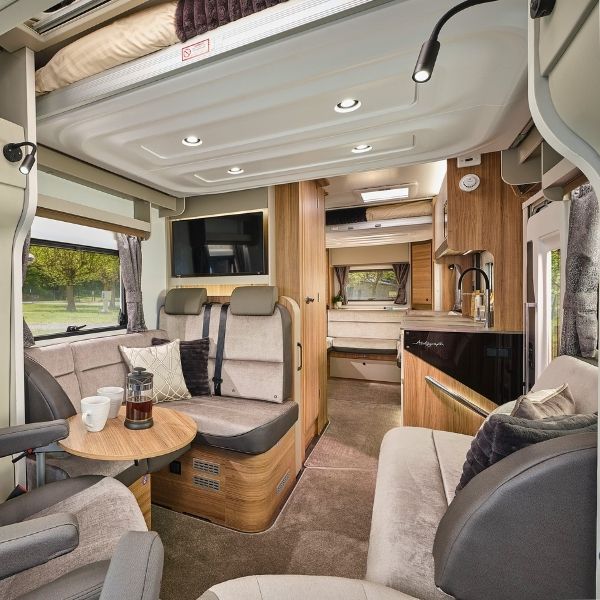
- Ideal for: Large families or groups who holiday together
- Main benefits: These motorhomes are typically larger and give you lots of storage space with more dedicated zones: expect to see social, sleeping, and dining spaces. They’re ideal if you holiday for long periods at a time
Our 6 berth motorhomes
Key concepts when choosing a motorhome
MTPLM (Maximum Technically Permissible Laden Mass)
This is the total weight that your motorhome can safely reach when fully loaded.
It includes everything on board your motorhome, including:
- Basic weight of the motorhome including standard equipment such as the leisure battery, full water tanks, hook-up cables and a full fuel tank
- The driver and passengers
- The user payload (see below)
If the MTPLM of your vehicle reaches more than 3,500kg, then you may need a different driving license category to be road legal.
Total User Payload
This is the amount of weight you’re allowed to add to your motorhome. It includes:
- Personal items including clothes and washkit
- Kitchen equipment
- Optional extras like bike racks that were not added to the vehicle in the factory
- Outdoors gear like bikes, BBQs, deckchairs, tables etc.
The payload is the difference between your empty motorhome (how it was fresh out of the factory) and the MTPLM.
You need to make sure you stay within your payload to remain safe and legal on the road.
Single Axle vs. Twin Axle
Motorhomes come with different possible axles at the rear. A single axle has one set of wheels, is lighter, and easier to maneuver. Twin-axle motorhomes have two sets of wheels at the rear and offer more stability when travelling with larger, heavier motorhomes.
Your Quick Glance Guide to the Bailey Motorhome Ranges
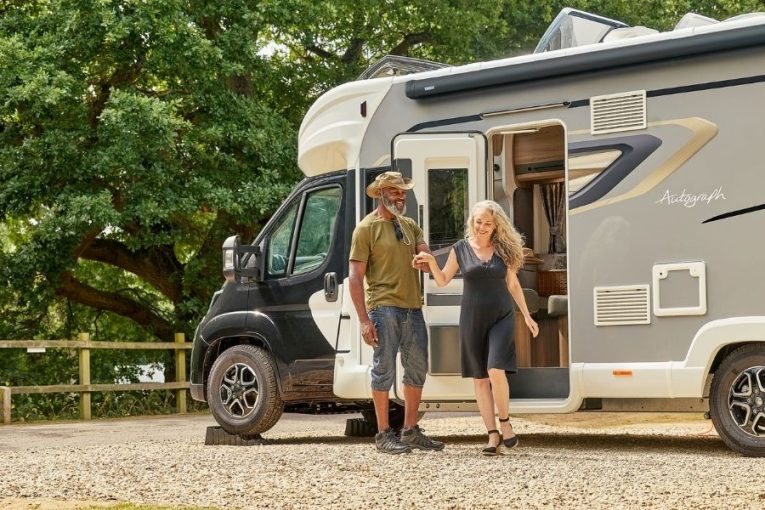
Autograph
Reintroducing the enhanced Autograph. This feature-rich motorhome is built with every practicality in mind so you can be self-sufficient for longer & measure your adventures in weeks, not weekends. It’s time to take the road less travelled.
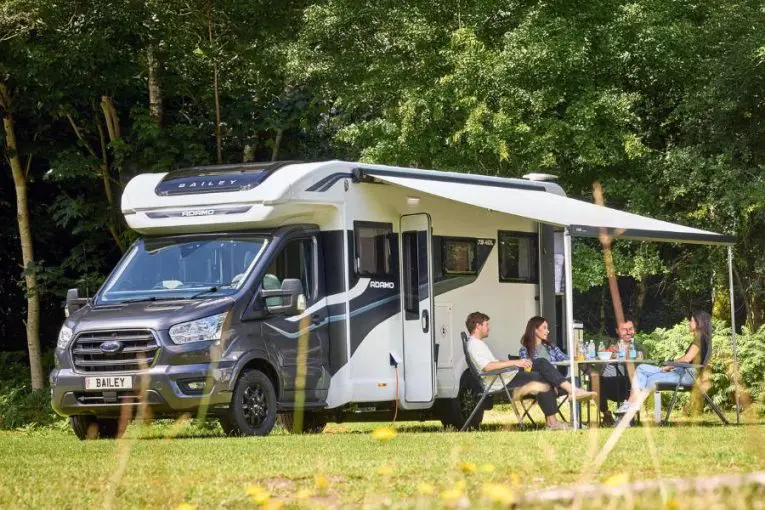
Adamo
The new Adamo; sophisticated styling meets smart design that offers endless flexibility for life’s active adventures.
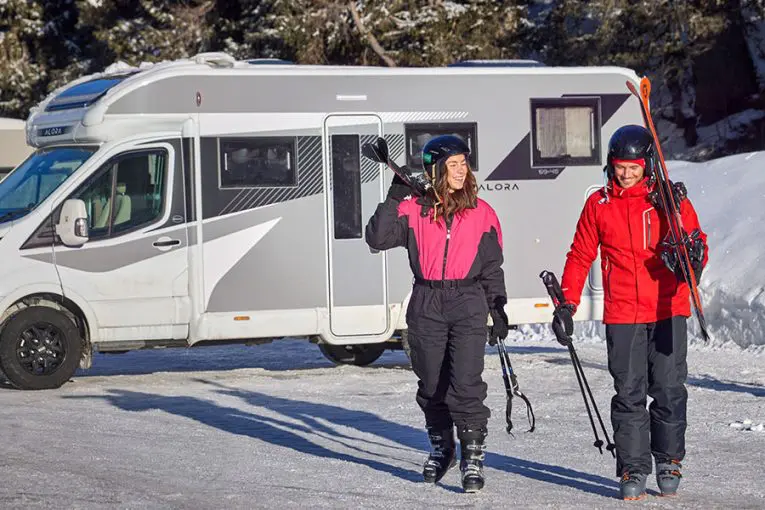
Alora
Slimline in shape and stylish in design, the Alora offers a bespoke and compact experience wherever you may find yourself. The convenience of a campervan with the comfort of a motorhome
Find Your New Motorhome
Made your mind up on which motorhome berth to go for? Great, then why not head to the Bailey of Bristol Virtual Motorhome Showroom to have a digital look around before heading to a showroom to see it in person?
Latest news & events
See all news & eventsCaravan Tech Annual Open Weekend
Caravan Tech, Merriments, Hawkhurst Road, Hurst Green, East Sussex

